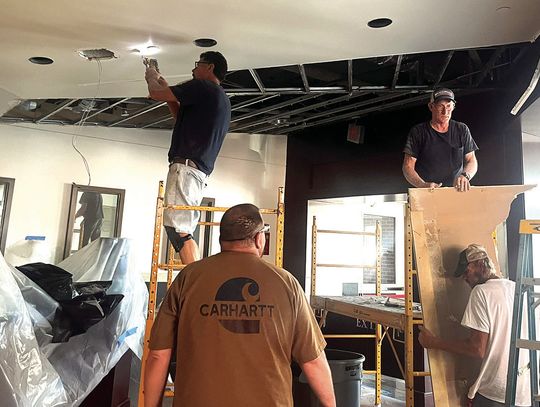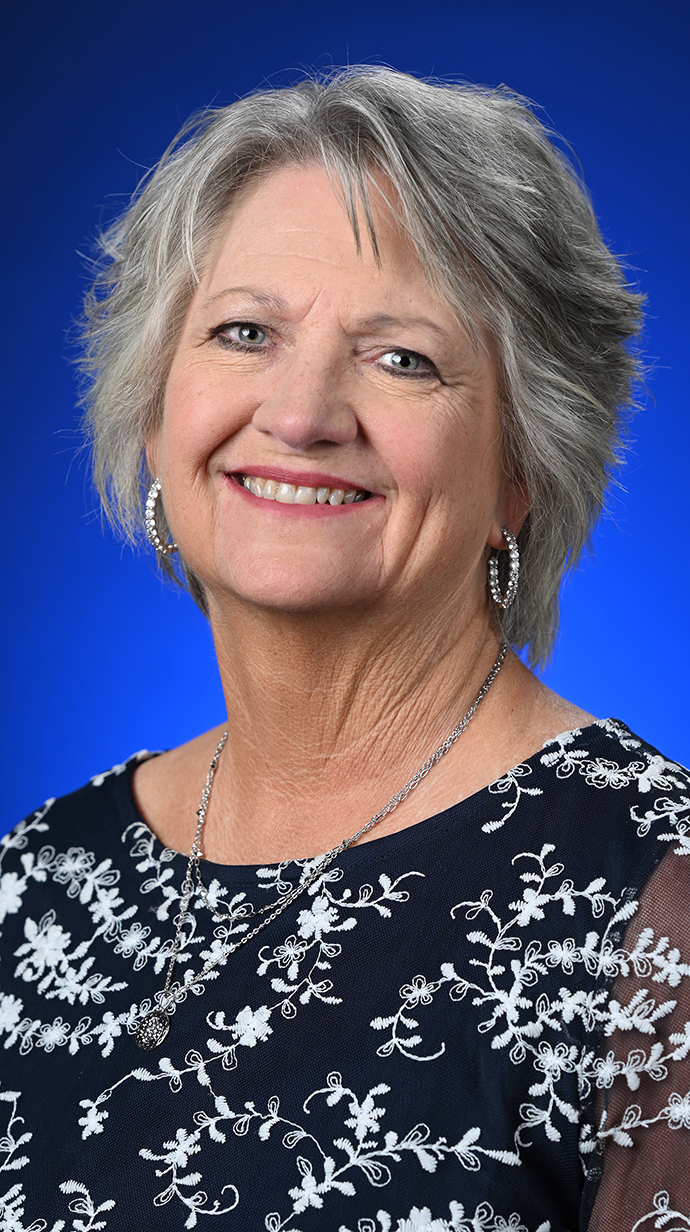Cooling Assistance Available – thenews-gazette.com

Virginia Energy Assistance Program: Cooling Assistance Report
Program Overview and Contribution to Sustainable Development Goals
The Virginia Department of Social Services has initiated its annual Cooling Assistance Program, administered through the Virginia Energy Assistance Program. The program is accepting applications until Friday, August 15. This initiative directly supports several United Nations Sustainable Development Goals (SDGs) by providing critical relief to households during periods of high temperature.
By alleviating the financial burden of energy costs, the program makes a direct contribution to SDG 1 (No Poverty). Furthermore, it is a crucial public health measure that upholds SDG 3 (Good Health and Well-being) by protecting vulnerable individuals from heat-related illnesses and ensuring safe indoor temperatures.
Eligibility Criteria and Alignment with SDG 10
To qualify for assistance, households must meet specific criteria designed to support the most vulnerable segments of the population, directly addressing SDG 10 (Reduced Inequalities). Eligibility requirements include:
- Household Composition: The household must include at least one of the following:
- A child aged 6 years or younger.
- An adult aged 60 years or older.
- An individual living with a disability.
- Income Level: The household’s gross monthly income must fall within specified limits. Prospective applicants are encouraged to apply to have their eligibility formally determined by their local department of social services.
Types of Assistance and Support for SDG 7 and SDG 11
The program provides a range of services aimed at ensuring access to functional cooling systems, which supports SDG 7 (Affordable and Clean Energy) by making essential energy services affordable and SDG 11 (Sustainable Cities and Communities) by improving the safety and resilience of housing.
Available forms of assistance include:
- Payment of electric utility bills to operate cooling equipment.
- Payment of security deposits for electricity to operate cooling equipment.
- Repair of a central air-conditioning system or heat pump.
- Purchase of a whole-house fan, including ceiling or attic fans.
- Purchase and installation of a window air-conditioning unit.
Program Stipulations and Continued Support
Households that previously received a one-time $365 benefit in June for electric bill payments will not be eligible for additional payment assistance of that specific type in 2025. However, these households remain fully eligible for other services, such as equipment repair or purchase, ensuring continued support. Participation in the Cooling Assistance Program does not affect a household’s eligibility for other programs, including fuel or crisis assistance.
Application and Access Procedures
To ensure broad and equitable access, applications are available through multiple channels and in both English and Spanish. The process for application is as follows:
- Online: Submit an application via the CommonHelp portal.
- In-Person: Submit a physical application to the household’s local department of social services.
- By Phone: Call the enterprise customer service center at (855) 635-4370. The center operates Monday through Friday, from 7 a.m. to 6 p.m.
Analysis of SDGs, Targets, and Indicators
1. Which SDGs are addressed or connected to the issues highlighted in the article?
-
SDG 1: No Poverty
The article addresses poverty by focusing on a program for households with specific income requirements, aiming to alleviate financial burdens related to essential services.
-
SDG 3: Good Health and Well-being
The provision of cooling assistance is directly linked to health, as it helps prevent heat-related illnesses, especially for vulnerable populations such as the elderly, young children, and individuals with disabilities.
-
SDG 7: Affordable and Clean Energy
The program directly tackles energy affordability by providing financial assistance for electric bills, ensuring that households can operate essential cooling equipment.
-
SDG 10: Reduced Inequalities
The program’s eligibility criteria specifically target vulnerable and marginalized groups, aiming to reduce the inequality they face in accessing safe living conditions.
-
SDG 11: Sustainable Cities and Communities
By providing resources to repair or install cooling systems, the program helps ensure access to adequate and safe housing, making homes more resilient to extreme heat.
2. What specific targets under those SDGs can be identified based on the article’s content?
-
Target 1.3: Implement nationally appropriate social protection systems and measures for all, including floors, and by 2030 achieve substantial coverage of the poor and the vulnerable.
The Virginia Energy Assistance Program described in the article is a clear example of a “nationally appropriate social protection system.” It targets the “poor and the vulnerable” by setting “income requirements” and focusing on households with a “child 6 years of age or younger, an adult 60 years or older, or an individual living with a disability.”
-
Target 3.8: Achieve universal health coverage, including financial risk protection, access to quality essential health-care services…
While not direct healthcare, the cooling assistance provides “financial risk protection” against the health costs associated with heatstroke and other heat-related conditions. It ensures a safe home environment, which is a key determinant of health for the vulnerable groups mentioned.
-
Target 7.1: By 2030, ensure universal access to affordable, reliable and modern energy services.
The program directly supports this target by making energy more “affordable” for low-income households. The assistance for “Payment of electric bills” ensures that qualifying households can access the energy needed for cooling, a critical service in hot weather.
-
Target 10.2: By 2030, empower and promote the social, economic and political inclusion of all, irrespective of age, sex, disability, race, ethnicity, origin, religion or economic or other status.
The program promotes social inclusion by ensuring that vulnerable groups, defined by age (“child 6 years of age or younger, an adult 60 years or older”), disability (“an individual living with a disability”), and economic status (“income requirements”), are not left behind and can maintain a safe standard of living.
-
Target 11.1: By 2030, ensure access for all to adequate, safe and affordable housing and basic services…
Cooling is a “basic service” essential for “safe” housing, particularly during periods of high heat. The program facilitates access to this service through assistance for “repair of a central air-conditioning system” and the “purchase and installation of a window unit air-conditioner,” directly improving housing adequacy and safety.
3. Are there any indicators mentioned or implied in the article that can be used to measure progress towards the identified targets?
-
Indicator 1.3.1: Proportion of population covered by social protection floors/systems, by sex, distinguishing children, unemployed persons, older persons, persons with disabilities, pregnant women, newborns, work-injury victims and the poor and the vulnerable.
The article directly refers to the specific groups covered by this indicator. Progress can be measured by tracking the number of households with “a child 6 years of age or younger,” “an adult 60 years or older,” or “an individual living with a disability” that receive assistance through the program.
-
Implied Indicator: Number of households receiving financial assistance for energy services.
The article implies this indicator by stating that assistance is available for “Payment of electric bills” and mentioning that some households received a “one-time benefit of $365.” The total number of households receiving this payment would be a direct measure of the program’s reach.
-
Implied Indicator: Number and type of cooling assistance services provided.
Progress can be measured by quantifying the specific services rendered, which the article lists as: “repair of a central air-conditioning system or heat pump; purchase of a whole-house fan… and purchase and installation of a window unit air-conditioner.” Tracking these numbers would show how the program is improving housing safety (Target 11.1).
-
Implied Indicator: Number of applications for assistance.
The article mentions that “Applications are currently being accepted” and can be submitted through various channels. The total number of applications received serves as an indicator of the demand for such social protection programs among the vulnerable population.
4. Create a table with three columns titled ‘SDGs, Targets and Indicators” to present the findings from analyzing the article.
| SDGs | Targets | Indicators |
|---|---|---|
| SDG 1: No Poverty | 1.3: Implement nationally appropriate social protection systems and measures for all…and achieve substantial coverage of the poor and the vulnerable. | 1.3.1: Proportion of population covered by social protection systems, distinguishing children, older persons, and persons with disabilities. (Directly referenced by eligibility criteria). |
| SDG 3: Good Health and Well-being | 3.8: Achieve universal health coverage, including financial risk protection… | Implied: Number of vulnerable households receiving assistance to prevent heat-related health issues. |
| SDG 7: Affordable and Clean Energy | 7.1: Ensure universal access to affordable, reliable and modern energy services. | Implied: Number of households receiving financial assistance (“$365”) for “Payment of electric bills.” |
| SDG 10: Reduced Inequalities | 10.2: Empower and promote the social…inclusion of all, irrespective of age, … disability, … or economic or other status. | Implied: Number of individuals from targeted vulnerable groups (elderly, children, disabled, low-income) benefiting from the program. |
| SDG 11: Sustainable Cities and Communities | 11.1: Ensure access for all to adequate, safe and affordable housing and basic services… | Implied: Number of households receiving services for “repair of a central air-conditioning system” or “purchase and installation of a window unit.” |
Source: thenews-gazette.com

What is Your Reaction?
 Like
0
Like
0
 Dislike
0
Dislike
0
 Love
0
Love
0
 Funny
0
Funny
0
 Angry
0
Angry
0
 Sad
0
Sad
0
 Wow
0
Wow
0













































































